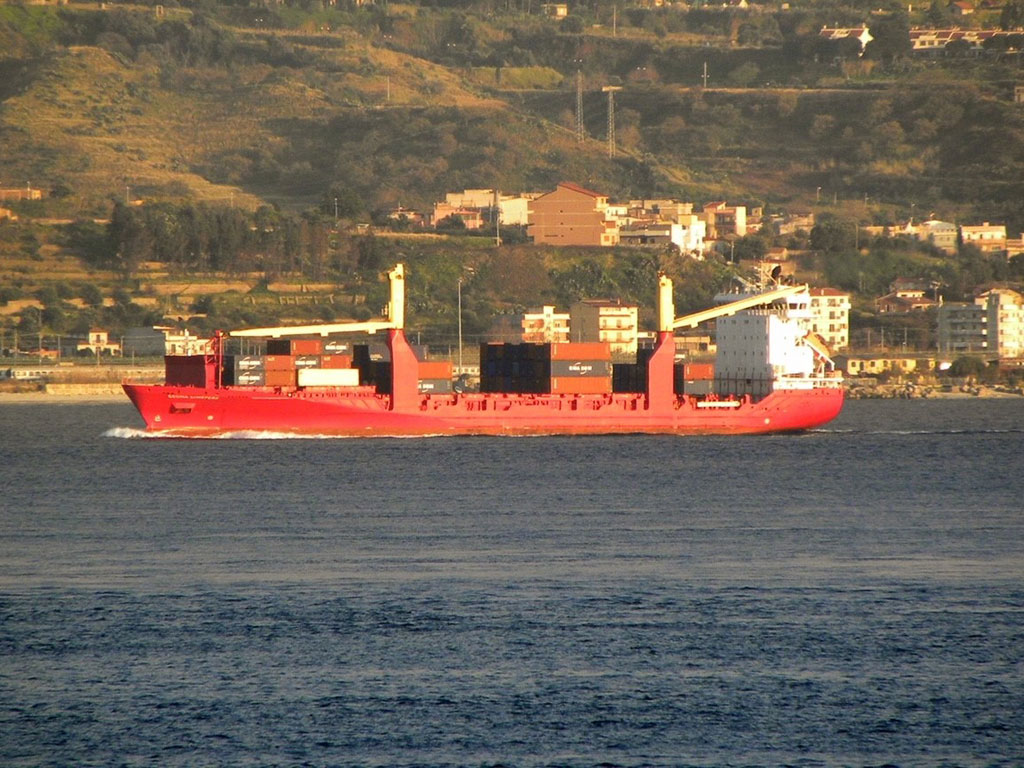In a development worth watching, newly created Doornekamp Lines has announced the launching in May of a bi-weekly Canadian-flag container service via the St. Lawrence Seaway between Halifax and Picton, a small growing port on Lake Ontario. Doornekamp Lines is a subsidiary of Doornekamp Construction, a family-owned business with head office in Odessa, Ontario.

“The Doornekamp Lines service between Picton and Halifax will fill a need on the Great Lakes for shortsea shipping,” said one of the principals, Ben Doornekamp, in an interview. Picton is 120 miles east of Toronto and the heart of Canada’s biggest commercial market.
French carrier CMA CGM, he indicated, has agreed to be one of the initial users.
First feeder vessel on the service will be the Gesina Schepers, an Antigua Barbuda-registered vessel with a capacity of 855 TEUs and reported draught of 8.5 metres. Recently in the western Mediterranean, the chartered ship is presently heading towards the Great Lakes.
“Booking all cargo and containers now!” stated Doornekamp. “We move all types and sizes of containers, heavy lift, breakbulk, project cargo, etc. We can provide first and last mile trucking options through local transportation provider Cooney Transport.
“Doornekamp Lines is dedicated to creating new opportunities for regional consumers and ultimately supporting Canadian consumers by increasing transport efficiencies, improving road safety and offering a more environmentally responsible option for both domestic and international trade.
“Doornekamp Lines offers an alternative transportation mode that facilitates diversification in the logistics chain from the East Coast to the Ontario Market.”
In Phase 2, the Ontario-based shipping enterprise intends to include a bi-weekly service between Picton and Cleveland, Ohio.

Because of the St. Lawrence Seaway’s limited draught of just over 8 metres (27 feet), the first vessel is not expected to move fully-loaded through the waterway.
It has been more than four decades since there has been a cellular service between an east coast port and the Great Lakes. Back in 1981, Manchester Liners abandoned a 500-TEU service it had operated for a decade between Montreal and the Great Lakes. A brief exception took place last October when Groupe Desgagnés, in a geared vessel, transported nearly 400 containers from Montreal to Toronto – a one-time event in relation to the huge backlog at the Port of Montreal generated by a series of summer docker strikes.
Since purchasing in 2015 the Picton Terminals port property (originally built by Bethlehem Steel in 1954), Doornekamp has invested substantially in its redevelopment. A Liebherr LH 420 crane offers a lifting capacity of 125 tonnes. On site there is a fleet of two flat deck barges, three hopper barges and two tugboats. The port is thus well equipped to handle heavy lift, project cargoes and marine construction. Importantly, a 220,000 sq. ft. expansion at dock level is slated for completion this year. In 2020, Picton handled 150,000 metric tons of cargo.





